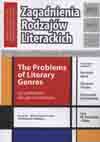Being Otherwise: How Events Become Things? Or Levinas Reads Hamlet
Being Otherwise: How Events Become Things? Or Levinas Reads Hamlet
Author(s): Nizar ZouidiSubject(s): Literary Texts
Published by: Łódzkie Towarzystwo Naukowe
Keywords: play; monument; otherwise; time; continuity; simultaneity
Summary/Abstract: Performance is usually seen as a transient event. Hamlet calls it a thing. How can an event become a thing? Philosophy distinguishes between things and events. The two orders are different. Their difference is articulated in terms of time. Things are continuous, while events are evanescent. Hamlet calls the play within the play a ‘thing’ (Hamlet. II. Ii. 612). He thus thrusts it into the order of the continuous. Levinas introduces the concept of being otherwise. In order to explain the evanescent continuity, we will make use of this concept. Acting introduces a new mode of being that differs from that of writing. It is „eventive” continuity that we wish to speak about. An actor is only otherwise. By this, we mean that s/he is essentially a difference. An actor is only what s/he is not. By being a difference, the actor survives. Actors do not die. It is true that actors are mortals but the role will survive being acted. Unlike writing, where the word survives as a fixed monument, the role survives through repetition. This repetition is a recreation through repetitive simultaneity. When Iago says: I am not what I am (Othello. I. i. 65), he defines himself as a simultaneous difference. To be only as difference is quite challenging. Indeed, if the only mode of being is being otherwise, we speak about pure difference. Pure difference — total otherness that has no other — is the essence of acting. In the following essay, we intend to explore the generic question of temporality through a comparison between the monumentality of writing and that of acting. We will try to explain how a play is a thing, a continuous mode of being.
Journal: Zagadnienia Rodzajów Literackich
- Issue Year: 56/2013
- Issue No: 1
- Page Range: 123-137
- Page Count: 15
- Language: English

